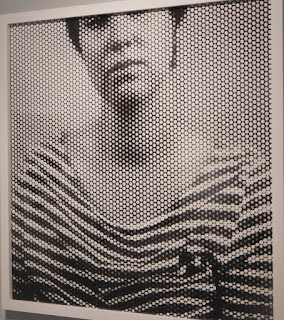 |
| Age of Aquariums |
 |
| The Blue Egg |
 |
| Nanu's Rubaiyat |
 |
| Girl from Ipanema |
 |
| Wood Sprite |
 |
| Ginger Jars |
A Liquid Symphony of Luminescence
By Tom Wachunas
“With color one obtains an energy that seems
to stem from witchcraft.” - Henri
Matisse
EXHIBIT: Walk on the
Wild Side - work by Nancy Stewart Matin / at The Little Art Gallery, in the
North Canton Public Library, through
January 20, 2019, / 185 North Main
Street, North Canton, OH / Monday – Thursday 10 a.m. to 8 p.m., Friday 10 a.m.
to 6 p.m., Saturday 9 a.m. to 5 p.m., Sunday 1 p.m. to 5 p.m.
Back in 2011, local
self-taught watercolor wizard Nancy Stewart Matin said in an About magazine article that she was enmeshed enough in art history to think of
painter Henri Matisse (1869-1954) as “…a personal friend.” So it is that even
the title of her retrospective exhibit of 30 paintings spanning about 25 years,
called Walk on the Wild Side, evokes
the temperament of Matisse and some of his Paris cohorts. For a short period of
several years very early in the 20th century, they were known
collectively as les Fauves, French
for “the wild beasts.”
These avant-garde innovators were significant
engineers in advancing a type of abstraction initiated by Post-Impressionist
painters including, among others, Gauguin, Van Gogh, and Cezanne. Walking on
the wild side indeed, the Fauves went a step or two farther. In augmenting the
chromatic intensity of paint to unprecedented levels, they boldly liberated
color from the confines of imitating the visible world.
This is not to say
that Matin’s stylized configurations are strictly Fauvist in nature. But to the
extent that her remarkably radiant palette allows arbitrary color to establish its own pictorial space,
independent of merely retinal descriptions of mundane realities, she’s
certainly a kindred spirit.
Her subjects are
diverse – floral, animal, figurative, still-life, and landscape – and
impeccably mounted here by curator Elizabeth Blakemore with all the skill of an
attentive orchestral arranger. This show is a virtual symphony for the eyes,
with the gallery itself becoming a luminous composition, replete with
mesmerizing harmonies, arresting tonal contrasts, and dazzling rhythmic accents
that prance about the room with invigorating energy.
The instruments of
this symphony – Matin’s watercolors – present a world-view, a perceptual
gestalt that straddles the empirical and the magical, the robust and the
delicate, the seen and the felt. Here’s to painting with the soul fully bared,
the eyes wide open, the hand given to childlike abandon.
Childlike, but never childish. Matin is
fully cognizant and in control of her medium’s daunting
tendencies to run too wild, to get too wet, or too muddy.
Her sense of abandon is a judicious one.
An aura of delightfully disciplined ebullience emanates from her work,
springing from a clarity of purpose.
That purpose is as
simple as it is profound – an unabashedly vigorous and joyful embrace of being
alive. Matisse, I think, would approve.














